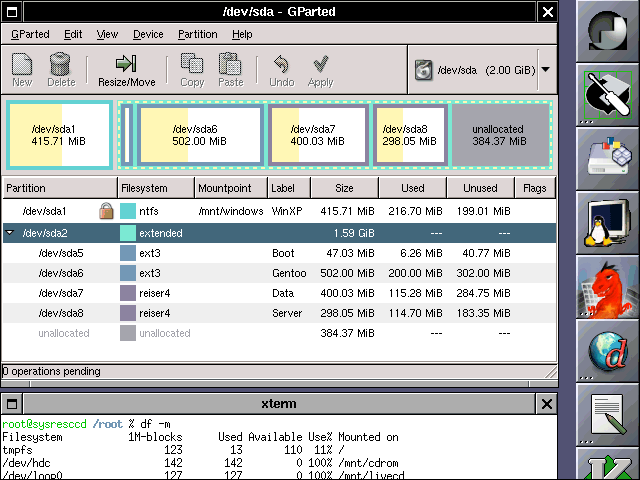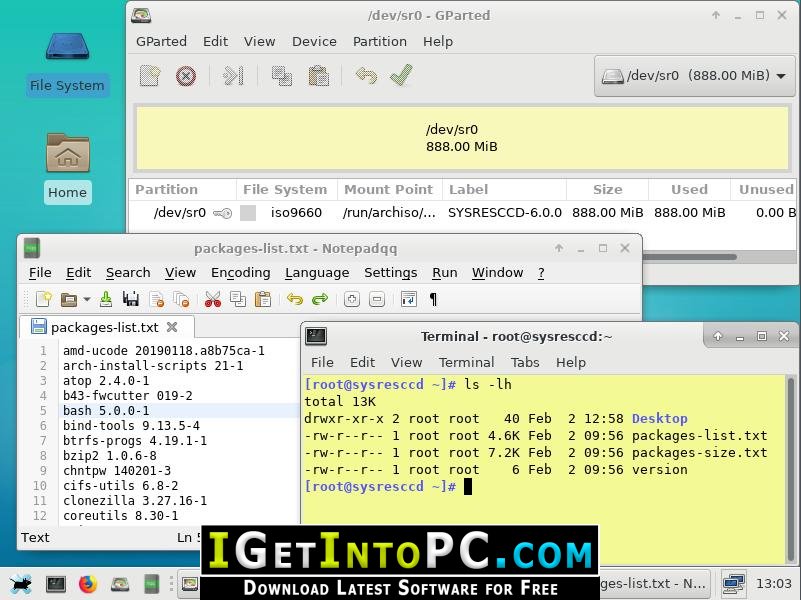
Note: It is currently recommended that you use the fstrimĪpplication to discard unused blocks rather than the discard mount Provisioned LUNs and virtual machine images, but may have a performance discard| nodiscard Enable/disable the issuing of commands to let the block device reclaim Write caching to be enabled, for devices that support write barriers.īarriers are enabled by default. Journal and for data integrity operations. barrier| nobarrier Enables/disables the use of block layer write barriers for writes into the Will reject the noattr2 mount option if it is set. Then that becomes the new default used by the filesystem.ĬRC enabled filesystems always use the attr2 format, and so Indicating that attr2 behavior is active. The default behavior is determined by the on-disk feature bit Setting or removing extended attributes) the on-disk superblock featureīit field will be updated to reflect this format being in use. New form is used for the first time when attr2 is selected (either when Made in the way inline extended attributes are stored on-disk. attr2| noattr2 The options enable/disable an "opportunistic" improvement to be Specifying a fixed allocsize value turns off theĭynamic behavior. Size, which uses a set of heuristics to optimise the preallocation sizeīased on the current allocation patterns within the file and the access The default behavior is for dynamic end-of-file preallocation Valid values for this option are page size (typicallyĤKiB) through to 1GiB, inclusive, in power-of-2 increments. Other generic options may be used as well refer to theĪllocsize=size Sets the buffered I/O end-of-file preallocation size when doing delayedĪllocation writeout. The following XFS-specific mount options may be used when mounting an XFSįilesystem. Through the xfsctl(3) and by-handle (see open_by_handle(3)) Some functionality specific to the XFS filesystem is accessible to applications xfsdump(8) and xfsrestore(8) are recommended for making Xfsdump(8) may become confused when doing incremental and resumedĭumps. If two XFS filesystems on the same machine have the same UUID, Using dd(1) or other block-by-block copying programs to copy XFSįilesystems. Help distinguish one XFS filesystem from another, therefore you should avoid The UUID is stored in every allocation group header and is used to
SYSTEMRESCUECD XFSPROGS FREE
Structures to locate free blocks and inodes these are located through theĮach XFS filesystem is labeled with a Universal Unique Identifier Also contained within each allocation group are data Next three sectors contain information for block and inode allocation within Superblock is just a copy and is not updated after mkfs.xfs(8). For allocation groups after the first, the Size that is a multiple of the realtime section extent size.Įach allocation group contains several data structures.

Each file in the realtime section has an extent The realtime section isĭivided into a number of extents of fixed size (specified at These files had an attribute bit set through xfsctl(3) after fileĬreation, before any data was written to the file. The realtime section is used to store the data of realtime files. That were in progress at the time of the crash. Mounting a filesystem after a crash, the log is read to complete operations Sequentially during normal operation and read only during mount. Running until those changes are made to the data section. Is used to store changes to filesystem metadata while the filesystem is The log section (or area, if it is internal to the data section) Original size) when xfs_growfs(8) is run. Number of allocation groups should not be set very high, since this canĬause large amounts of CPU time to be used by the filesystem, especially It should be increased from theĭefault if there is sufficient memory and a lot of allocation activity. The number of allocation groups controls the amount of parallelismĪvailable in file and block allocation. Mkfs.xfs(8) so that there is normally a small number of equal-sized

The number and size of the allocation groups are chosen by The data section is divided into a number of allocation (non-realtime) files and the log area if the log is internal to theĭata section. The data section contains all the filesystem metadata (inodes,ĭirectories, indirect blocks) as well as the user file data for ordinary The filesystem sections are divided into a certain number ofīlocks, whose size is specified at mkfs.xfs(8) time with the Log section can be either separate from the data section or contained within Section is absent, and the log area is contained within the data section. Using the default mkfs.xfs(8) options, the realtime Xfs - layout, mount options, and supported file attributes for the XFSĪn XFS filesystem can reside on a regular disk partition or on a logical volume.Īn XFS filesystem has up to three parts: a data section, a log section, and a


 0 kommentar(er)
0 kommentar(er)
